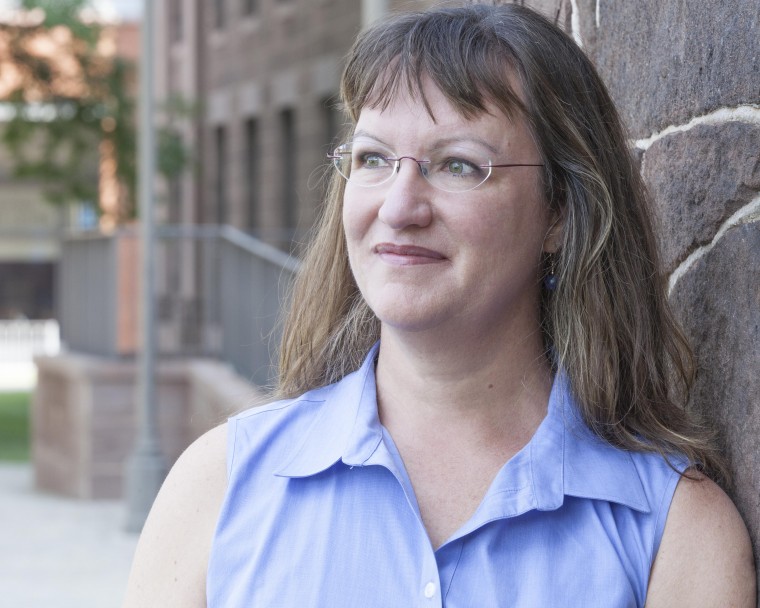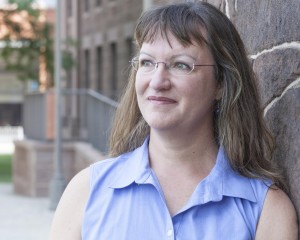McAlister in The Conversation: For Some Catholics, It Is Demons That Taunt Priests with Sexual Desire


Wesleyan faculty frequently publish articles based on their scholarship in The Conversation US, a nonprofit news organization with the tagline, “Academic rigor, journalistic flair.” In a new article, Elizabeth McAlister, professor of religion, writes about a lesser-known factor contributing to the abuse of children uncovered in the Catholic Church: In some strands of Catholic thought, priests who abuse children have succumbed to temptation by demons. McAlister is also chair and professor of African American studies, director of the Center for African American Studies, professor of American studies, professor of feminist, gender, and sexuality studies, professor of Latin American studies.
For some Catholics, it is demons that taunt priests with sexual desire
A Pennsylvania grand jury recently released a report on the systematic ways Catholic priests aided and abetted one another to sexually abuse children for 70 years.
It reveals once again how the strict patriarchal hierarchy of the Catholic Church gives rise to conspiracies of silence and allows for routine cover-up of crimes. Cover-ups are also encouraged by clericalism – the belief that ordained priests are inherently superior and closer to God than the laity. This much has been demonstrated by countless observers.
But there is another, lesser-known factor contributing to the abuse, that I want to point out as a scholar of spiritual warfare in some forms of Christianity. This factor lies in the realm of belief: In some strands of Catholic thought, when priests abuse children, it is because they have been tempted by demons, and succumbed.
History of demon beliefs
The Catholic Church invites priests to view sexuality as a battle in the war between good and evil. Spiritual warfare is one name for this view of the world and it has a long history in Catholic teachings.
The idea of demons has been around since antiquity – in the Mediterranean world, the Middle East and elsewhere. In Christianity, preoccupation with demons reached its peak in the Middle Ages. Demons were explicitly defined by the church in 1215 under Pope Innocent III.
Theologians worked to identify classes and ranks of demons who operated under the authority of the devil himself. Demons were seen as fallen angels who disobeyed God and worked to subvert God and goodness.
Demons are malevolent beings who lord over specific domains of sin. Christians are called to battle evil, including evil that comes by way of the demonic. The more pious one is, the more intense will be the attacks from the demons.
After the Second Vatican Council of 1964, demons faded out of focus and exorcisms were rare. But my research shows that the spiritual warfare world view is on the rise in the Catholic Church. This is despite the fact that demons and exorcisms are largely viewed by most American Catholics as remnants of a medieval past.
The return of demons and exorcisms
In 1999, Pope John Paul II brought back a focus on the formal rites of exorcism – the official ritual that priests use to rid a person from demonic affliction or possession. The pope later recommended that every diocese in the Catholic world appoint and train an exorcist.
The Catholic Church in the United States took up the call and in 2012 founded the Pope Leo XII Institute in Illinois to support “the spiritual formation of priests to bring the light of Christ to dispel evil.” To this day it serves as a “school for exorcism and deliverance” of the laity from demons.
The institute offers workshops for clergy such as “Angels and Demons, Natures and Attributes.”
Under this belief system, in the battle for souls, demons can establish relationships with people who open the door to them through sin and disobedience to God. If someone masturbates, for example, which is a mortal sin, they are opening the door wider to demons of more serious sexual perversion.
Such demons include figures mentioned in the Bible such as Baal, the ancient Phoenician sun God, and his consort Ashtoreth, now viewed as a force of sexual immorality and perversion. Jezebel, the ninth-century B.C. Phoenician princess, lives into the modern era as a demonic personality who encourages illicit sexual acts, violence and rape.
Devil and role-play in one church
Writing for Commonweal, an American Catholic journal, one ex-seminarian described a formation, or training, workshop sponsored by his seminary. He described how participants were given nametags with the names of demons on them and asked to play the role of demons to tempt one another. He explained how they would choose one person and “hiss and curse” to entice him to “watch pornography” and “masturbate.”
The point, of course, was to train the participants how to choose chastity and to stand strong against sexual desire.
To be clear, this is only one documented instance. However, I would argue that it points to the Church’s current preoccupation with evil spirits and the need for priests to ritually remove that evil.
It is sobering that one seminary should choose to offer those training for a life of service and celibacy, a role-play of hissing demon impersonators, as a way to govern their conduct.
Medieval practices in today’s church?
Ascribing sexual desire to demonic temptation takes away the blame from the perpetrators. It puts the cause, the consequences, and questions of accountability into an invisible world populated by angels and demons, sin and repentance.
Suggesting that the offending priests were afflicted by demons is a version of “the devil made me do it.”
There is a second heartbreak. Many of the abused report feeling guilty, as if they had sinned themselves. I have heard from my own research participants that because sinning opens the door to more demons and more sin, then some abuse survivors think of themselves as being in relationships with personal demons and more vulnerable to demonic attack.
As investigations continue into the institutional factors allowing for this horrific abuse, it may also be pertinent to look into some of the intellectual and theological elements at the heart of the Catholic tradition.
For some branches of the Church, this includes the medieval world of demons.
Elizabeth McAlister, professor of religion, Wesleyan University
This article was originally published on The Conversation. Read the original article.

